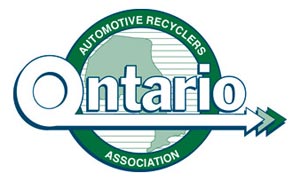Here’s what happens to your vehicle once you’re finished with it.nnby Matt Bubbers, CAA Magazine Winter 2022nnAfter 20 years of faithful service, imagine your beloved truck, which has covered more than 300,000 km in daily commutes, grocery runs and road trips, suddenly stops working. The upholstery is torn, the transmission is shot, the body has rusted—it can’t go anywhere. Now what?nnAn estimated 1.6 million vehicles are taken off the road each year in Canada, but what happens to them next isn’t well documented. A few are offered as donations, while others are stripped for parts, recycled or simply thrown out. Here are the most common options.nnFinding a new purposenSome people donate their car, truck or SUV to charity, many of which will accept them in working and non-working order, and then sell them for parts. You’ll get a tax receipt for its value, as well as peace of mind for supporting a good cause (see “Recycle Your Ride,” page 26).nnIn rare cases, some autos get a second life on the silver screen, thanks to movie-car lots, such as Toronto’s Picture Vehicle Specialities. They’ll occasionally buy rare, rundown cars to be used as static props, background cars or to be blown up in an action scene.nnScrapping old modelsnThe vast majority of vehicles that have reached the end of their life, however, eventually go to scrap metal yards or auto recyclers, says Steve Fletcher, managing director of the Automotive Recyclers of Canada (ARC), an association representing 400 recyclers across the country.nnFletcher admits there’s a lot of overlap between the two types of businesses, but explains that scrap metal yards are mainly interested in recovering and selling metal. On the other hand, auto recyclers buy end-of-life vehicles in order to recover and sell valuable parts in addition to the raw metal. As part of the process, recyclers also safely remove oil, fuel, airbags, tires and batteries to make the vehicles less polluting when they hit the landfill.nn“Scrap car prices depend on the vehicle’s year, make, model, mileage, condition and location, including towing costs,” Fletcher says. “For most of Ontario, recyclers pay between $500 and $1,000, while prices on the east and west coasts seem to run about two-thirds of that.”nnAfter vehicles are stripped of useful parts and/or pollutants, the remaining shell is typically crushed and sent to a shredder to meet its final fate. Shredding is exactly as it sounds.nnThe Triple M Metals shredder in Hamilton, Ont., for example, is the size of a large three-storey house. Its spinning metal teeth can chew up and spit out an entire car, turning that once-beloved family chariot into fist-sized chunks of metal confetti in just 30 seconds. Much of the resulting metal can then be melted down and remanufactured into something new.nnManaging wastenOn average, 85 percent of a vehicle’s weight can be recycled or reused, with the other 15 percent—usually plastic, glass and foam—ending up in a landfill, Fletcher says.nnBut the result is still a huge amount of waste, considering that we’re talking about 1.6 million automobiles, each weighing an average of 1,700 kg. Even with just 15 percent of that volume going to landfills, that’s still roughly 408 million kilograms of wasted material from cars piling up annually, or the weight of 3 1/2 CN Towers going to the dump each year.nnClearly, there’s plenty of room for improvement. “The short-term objectives are, how can we get better at dealing with that 15 percent that’s still mostly lost?” says Edwin Tam, a recycling expert and associate professor of civil and environmental engineering at the University of Windsor.nnPlastic makes up the bulk of automotive landfill waste. But according to ARC, it’s not economically viable to pull apart and recycle all the different plastics found in cars, trucks and SUVs. The organization is, however, studying the issue in order to meet Canada’s goal of zero plastic waste by 2030. Among the proposals are the creation of a database to catalog the many types of plastics found in vehicles, as well as offering a bounty on plastic bumpers, which are recyclable and easily removed.nnEnvironmental practicesnIn the longer term, figuring out how to fully recycle electric vehicles (EVs) and their resource-intensive batteries will be an important step in reducing climate change-causing carbon emissions.nn“Right now, the research has generally shown the consumption stage, driving and refuelling, probably produces the most environmental impact overall,” Tam says. In a future where EVs are running on clean electricity, he explains, the biggest source of emissions will likely come from the production stage, rather than consumption. “Where are you getting the materials from? How are they being extracted? Can you close the loop and get all that precious stuff out of spent batteries?” he asks.nnIn response, specialized recyclers are springing up, such as Toronto-based Li-Cycle Holdings, which already has EV battery recycling facilities in Ontario and New York. Another Canadian start-up, Moment Energy Inc., signed an agreement this year with Mercedes- Benz Group to turn old EV batteries into energy storage solutions for buildings.nnImproving vehicle designnCar companies, too, are thinking about design in a more environmentally conscious way. The 2021 BMW i Vision Circular and the 2022 Polestar O2 concept cars were both created using fewer materials, can be easily dismantled and are fully recyclable.nnWhen it’s time to say goodbye to your ride, ensure you give it a proper send-off, whether you donate it to charity or sell it to a recycler. “We need to be better at most things we do for the environment,” Tam says, who encourages everyone to be thoughtful about purchases and how they’re eventually discarded. It’s sound advice, not just for cars, but for all products we too often take for granted.
